The woods between Rudry and Parc Cefn-onn are about the limit for my weekly long walk – about 12-13 miles with quite a bit of Up! But there is still plenty to have a look at.
This little ruined farmstead at ST 19223 85750
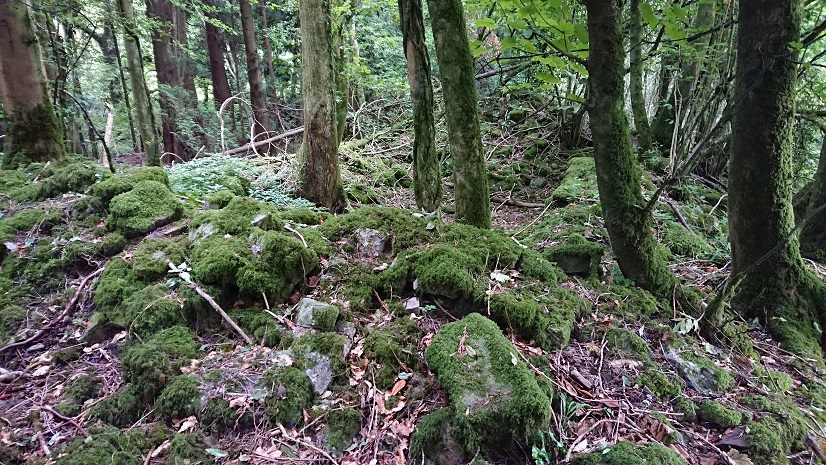
took a surprising amount of finding. Part of the problem was the name. On the old OS maps it’s Pen-y-bwlch, Head of the Pass – but it’s actually well down in the valley. The current OS marks a track to it – a double-pecked-line track, looking on the map like a forest road, with a bridleway along it and crossing the footpath and the little stream to head over the fields to Ty’n-y-graig.
But there is no road through the woods. Just the footpath south from Coedcae Garw along the edge of Coed Coesau-whips. The old maps put it east of the footpath but the path now goes between the house (to the west)
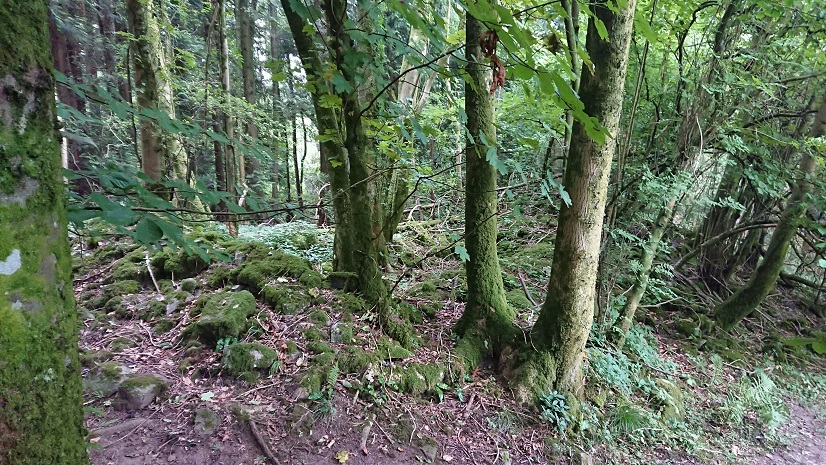
and what remains of the outbuildings.
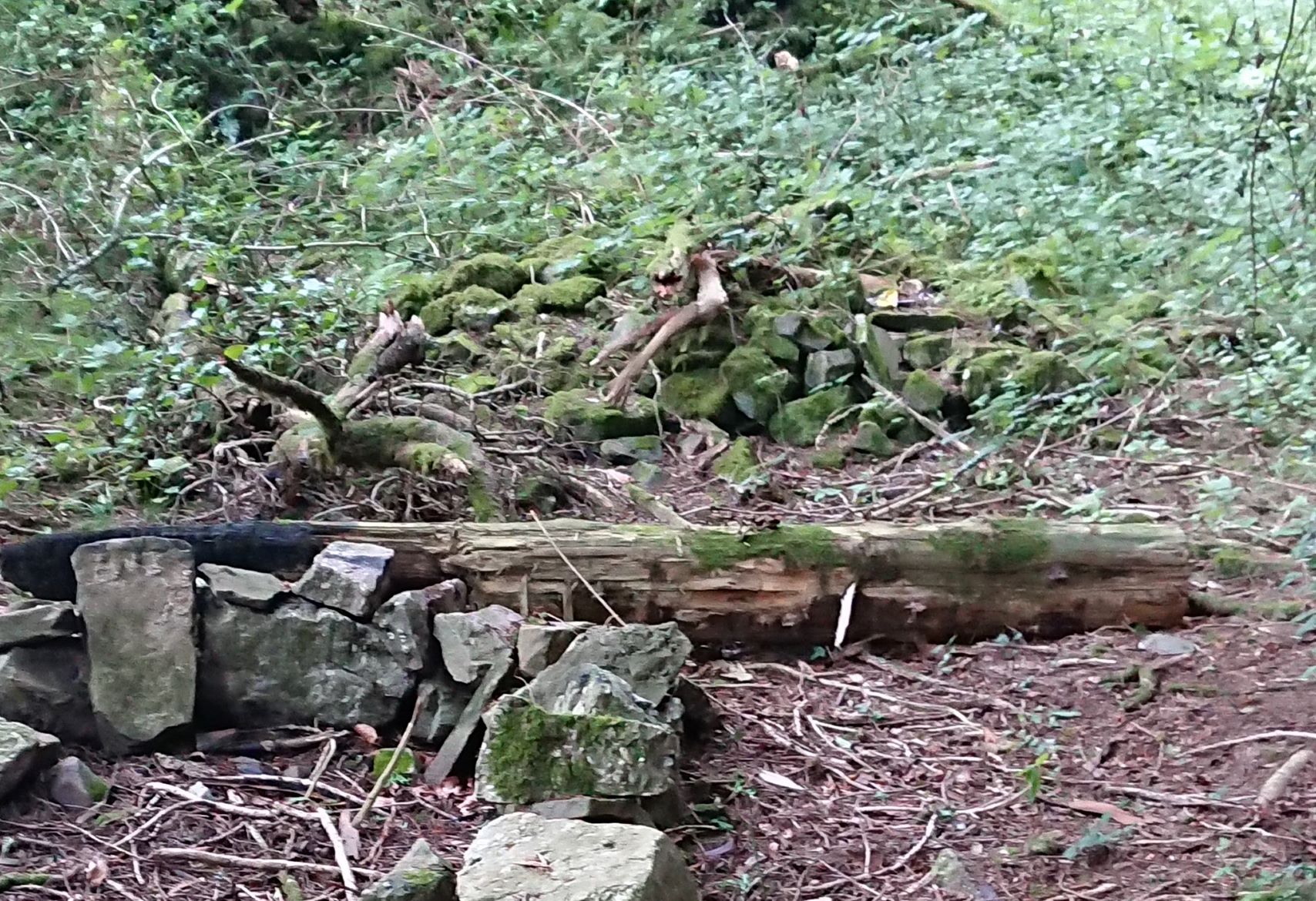
(Someone has made a firepit with a lot of the outbuilding stone.)
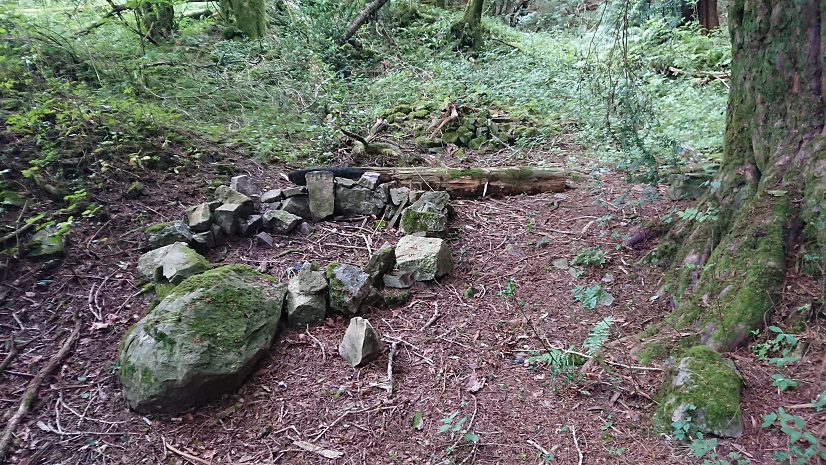
Once we found it, though, after a couple of false starts, it was worth the effort.

(here’s Nell on the house wall.)
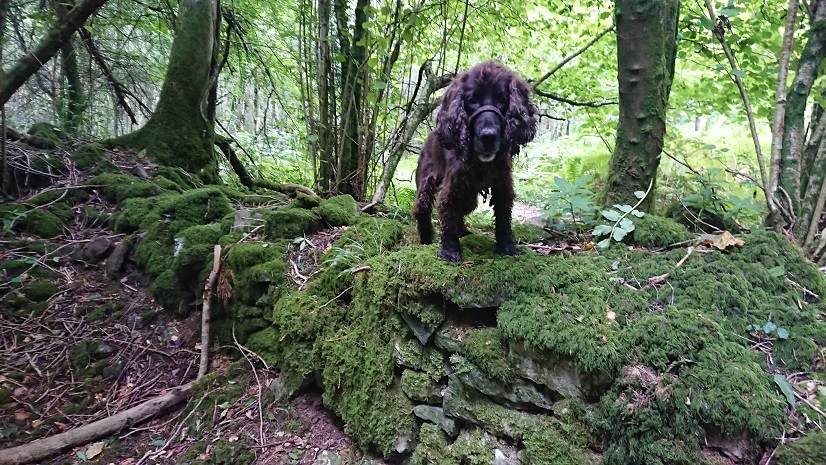
On the tithe plan it’s a farm of just over 20 acres, with a couple of fields along the lane to the north and the rest to the south and east. Coed Coesau-whips on the tithe plan is smaller but still shown as mainly conifers – but John Owen’s idea that the name suggests charcoal production for the iron industry would mean an earlier wood of something like beech and oak. I do wonder whether these little farms like Coedcae Garw, Cwm and Pen-y-bwlch were carved out of the original wood. Then when timber became a valuable commercial commodity for pit props and the plantation was extended, the farms were reabsorbed.
There would also have been access problems. On the tithe plan the access is down the lane past Coedcae Garw,
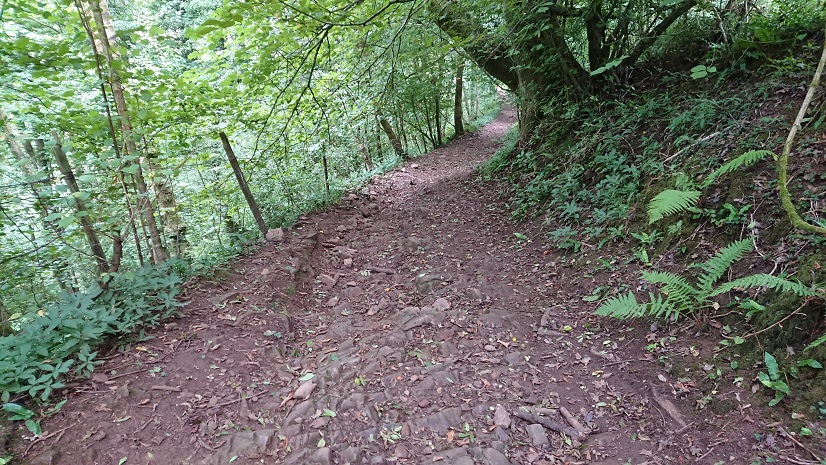
across the ford
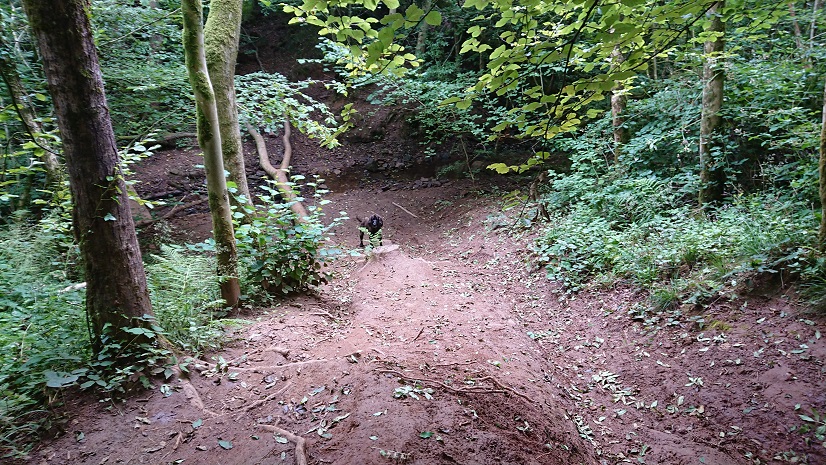
and up a narrow hollow way –
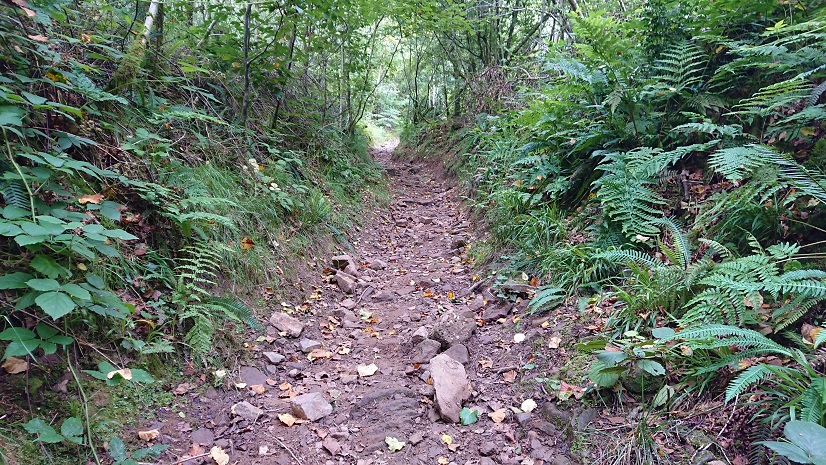
this must have been possible only for a single horse, no room for even a small wheeled vehicle. By 1900 there was a track through the woods, but by that date most of the farmland had been lost to forest. The house is still marked by name but can only have been a cottage for something like a forest worker.
Access may have been what put an end to a lot of these little farms – once farming moved from using horses to mechanical vehicles, anywhere far off the road would have great difficulty in keeping going.

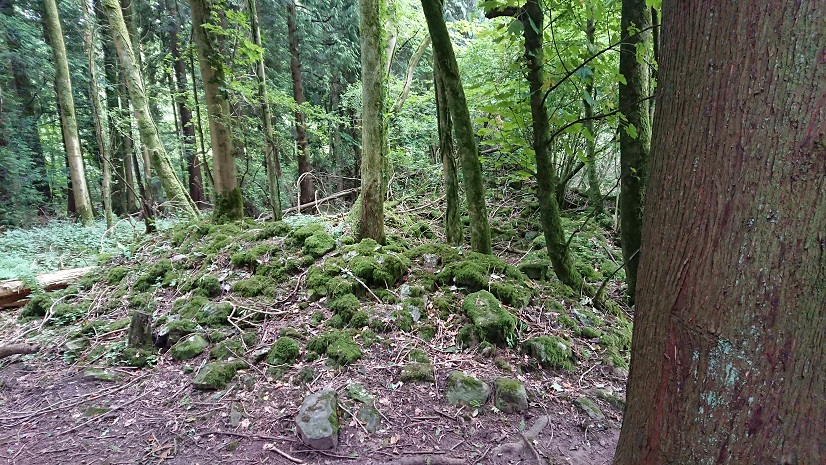

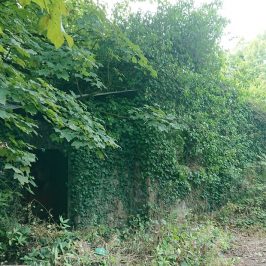
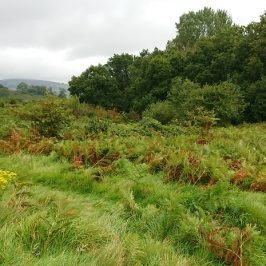
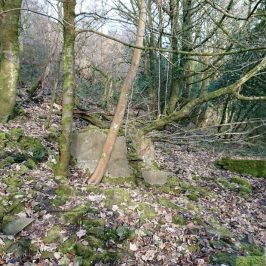
Leave a Reply